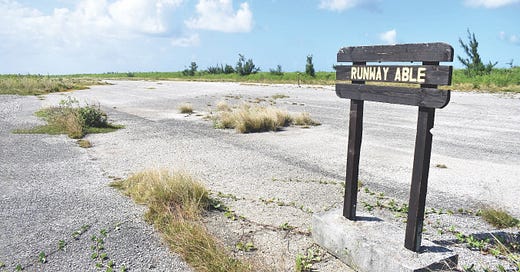Tiny, Historic Pacific Island a Model for US-China Confrontation
Pacific militarization heats up with US’s Tinian reclamation
By: Wong Ming Jun
The US military is returning to the tiny island of Tinian, from which the B-29 Superfortress piloted by Col. Paul Tibbets lifted off on August 6, 1945, to visit nuclear holocaust on the Japanese city of Hiroshima. In a bid to mitigate Chinese missile threats against its airbases in the Pacific Hemisphere, the return of a significant US military presence not only mirrors Chinese efforts in the South China Sea, but has the potential to call into scrutiny existing Chinese influence on US Pacific territories such as Tinian, Saipan and Guam where, US espionage officials suspect, behind casinos lurk surveillance capability.
In a mid-December interview, US Pacific Air Forces Commander General Kenneth Wilsbach announced increased efforts to reclaim the disused WWII-era Tinian North Airfield from the overgrown jungle “between now and summertime.” That will be atop efforts to expand aircraft dispersal facilities and reclaim another WWII-era disused runway at Tinian International Airport, known as Tinian West Field during WWII.
Collectively, Tinian’s runways are a significant piece of military installation hardware which provided an important base for the US B-29 Superfortress strategic bomber force to launch missions against Japan. At its peak in May 1945, Tinian’s North Field was the largest military airfield in the world, with four 8,000-foot runways covering nearly the entire northern portion of the island, capable of hosting more than 250 B-29s. It was from Tinian North that the two atomic bomb missions flown by Enola Gay and Bockscar were launched, following which the Japanese surrender on September 2 officially ended WWII in the Pacific…



